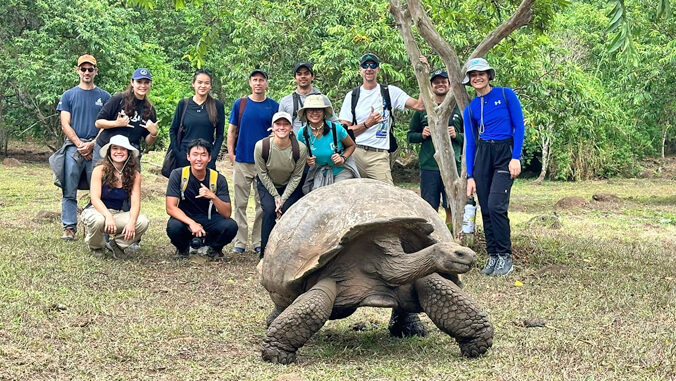
Once in a lifetime: Undergraduate students conduct research in Galápagos | Travel News
Eight undergraduate students from various fields at the University of Hawaiʻi at Mānoa embarked on an all-expenses-paid research trip in the summer of 2024, spending eight weeks immersed in the Galápagos Islands. During this once-in-a-lifetime experience, they participated in mentored research, fostering deep connections to the land, people, and stewardship of these ecosystems.
Creighton Litton, professor and director of the Undergraduate Research Opportunities Program (UROP), highlighted the program’s impact, emphasizing its role in providing students with transformative research opportunities. He noted the strong collaboration with the Charles Darwin Foundation (CDF) in the Galápagos, as well as the participation of multiple UH Mānoa faculty. This innovative program enables students to engage in scientific research within a Native Hawaiian learning environment.
More than 80 students applied, with 12 selected for a preparatory spring course on island invasion biology. Eight students traveled to the Galápagos, while four conducted research in Hawaiʻi. The students developed their research proposals under the guidance of mentors from UH Mānoa and CDF, contributing to significant scientific inquiries.

While in the Galápagos, students conducted research projects centered on island invasion biology and wrote papers detailing their process, from literature review to data analysis and conclusions. They also created personal narratives, or contemporary kaʻao, documenting their journey and growth through their experiences.
The research included projects like Matthew Kahokuloa’s assessment of plant diversity on Santa Fé Island after the reintroduction of giant tortoises, and Emily Josefina Velasquez’s study of the impacts of the green alga Caulerpa racemosa on benthic invertebrates. Another student, Nicole Buyukacar, focused on the developmental dynamics of the avian vampire fly, sharing her awe at the rich wildlife in Puerto Ayora and the transformative nature of her experience.
The students presented their findings and kaʻao at the CDF research station and the UROP SURE Symposium. Many are now working with their mentors to publish peer-reviewed articles. This program, funded by grants from the National Science Foundation and UH Mānoa, will continue to offer similar opportunities for at least the next two years.

